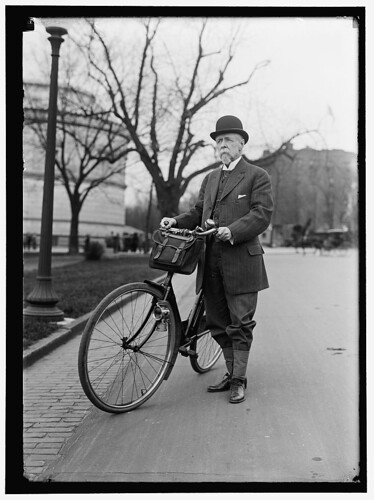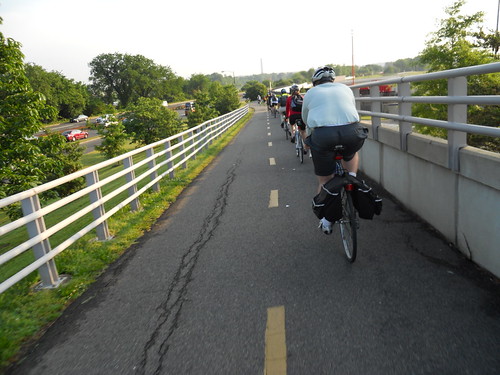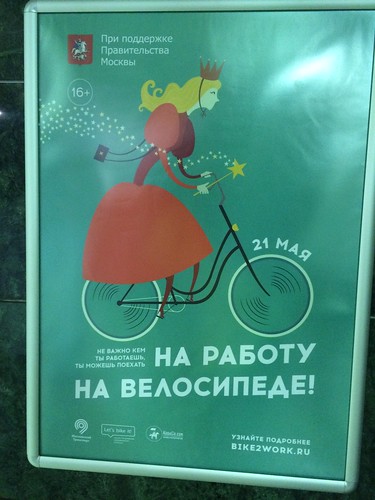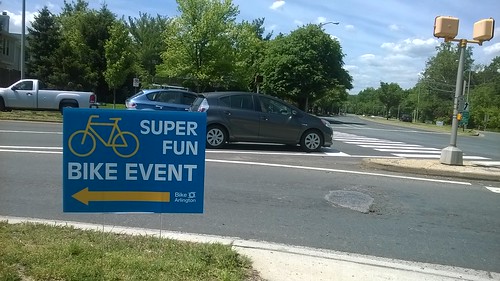 The Mechanical Horse: How the Bicycle Reshaped American Life
The Mechanical Horse: How the Bicycle Reshaped American Life by
Margaret Guroff
My rating:
3 of 5 stars
Several times recently I have written Goodreads reviews for books and commented that I was not part of the target audience for the book. When I got this from the public library, I thought to myself, "aha - here is a book where I certainly am part of the target audience!" After all, I read books about cycling history whenever I find them and I even have a
bicycle history oriented blog (although I have not published so much in recent times). Once I had read partway through this, I decided I apparently was not really the target audience for this book, either, which I will explain below.
First, I should note that I was a little confused by the title, subtitle, and dust cover illustration of this book. I added up "mechanical horse" and "how the bicycle
reshaped American life" (in the past, mind you) with the drawing of a couple in the 1890s riding their then-new safety bicycles and took this to be a book about the early days of cycling. It turns out it covers the entire span of bicycle history, from the earliest days up through now, all in only about 165 pages of text. (Extensive notes and an in-depth bibliography add another 120 pages, which is unusual. Oddly Goodreads says the book is 216 pages, but the copy I have has 287 including the index.)
165 pages isn't much to cover the entire history of cycling in America, certainly not in any kind of depth. That's why this wasn't, I think, a book for an enthusiast like me - there just isn't much depth to what is here. Which is too bad, because in looking through the above-mentioned extensive bibliography and notes, I was able to appreciate how much research went into this book - a lot! I sensed that the author chose not to share much of what she learned with her readers in this book, for whatever reason.
I thought the author made several surprising detours in her discussion of how bicycles reshaped American life. One of the eleven chapters talks about the connection between the development of flight, most notably the Wright brothers, and cycling in general. And another (The Cycles of War) talks about use of bicycles by different armies, with what for this book is a long digression into a discussion of the use of bicycles in the Vietnam War (by the North Vietnamese). I thought the direct connection between these topics and "reshaping American life" was pretty thin.
The book has a few illustrations, but some concepts that would have been helpful to who with illustrations or photographs are not included - for example, the simple difference between a so-called "ordinary" bicycle and a "safety" bicycle.
Although the book has (as noted) page after page of notes on what is in the text, these are not referenced in the text itself. If you wonder what the source was for something, you look to the back of the book and maybe there is relevant note and maybe not. I guess having endnote numbers in the text would be a distraction? Or not appropriate for this popular treatment?
The final chapter tries to briefly summarize the many different cycling tendencies out there now and to argue that the influence of cycling is likely to grow. Sure, maybe. But there isn't much that is persuasive provided here.
If one is interested in the topic and not too familiar with it, this is a reasonably short and certainly quite readable way to learn about some of the ways American society has been influenced by cycling. I was disappointed because for all the effort that seems to have gone into it, it could have been better.
View all my cycling book reviews on Goodreads.










